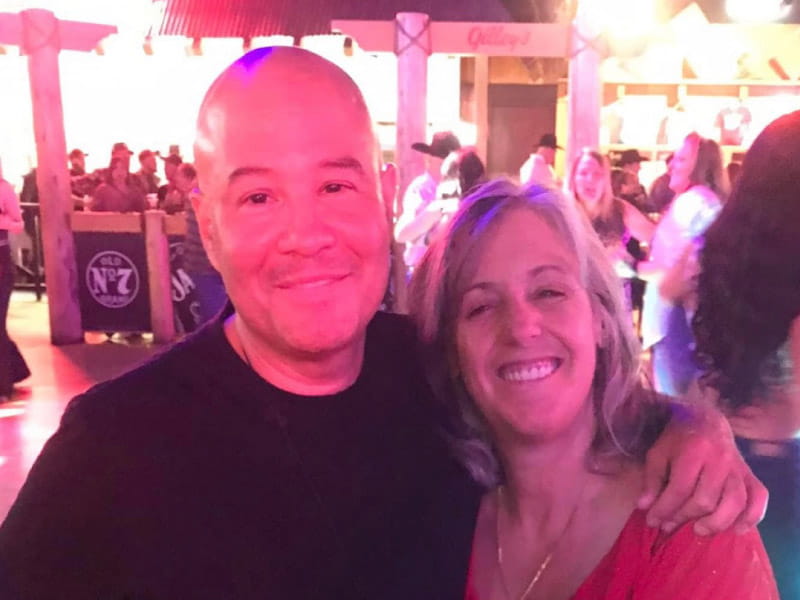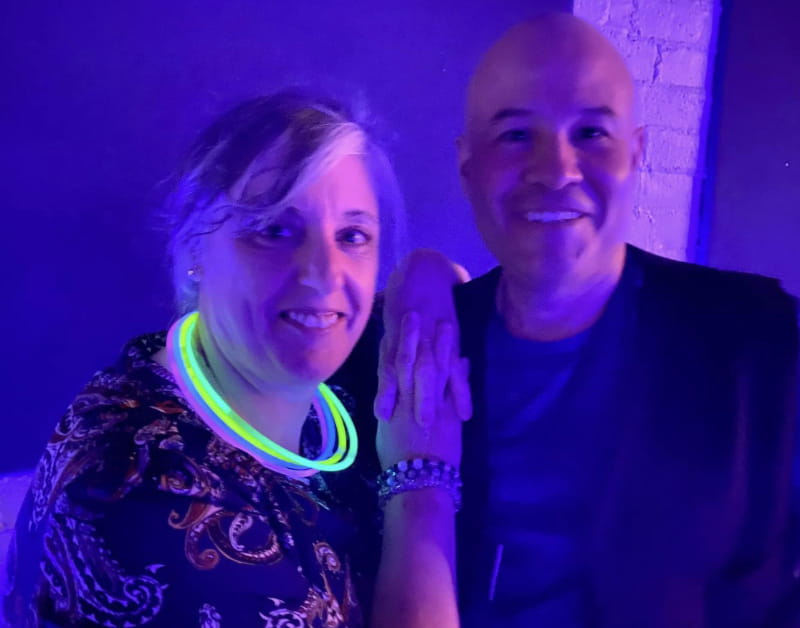How did this dancer's heart transplant go? Recovery included a jig in a hospital hall
By Leslie Barker, American Heart Association News

Alphonso Aguilar's father had his second heart attack and died on the dance floor while doing the salsa. He was 63 years old.
An avid ballroom dancer himself, the younger Aguilar shares his dad's passion and prowess for dance. And, as it turns out, his heart problems. After surviving a heart attack at 51, and learning he'd been born with a heart defect, Aguilar channeled his energy into avoiding his father's fate.
He began watching videos and listening to TED talks, gathering ideas and inspiration for medical and holistic ideas to help him be his healthiest self.
"In my mind, I was thinking, 'I'm going to live. I'm going to do whatever it takes to live. This is not my time,'" he said.
He made sure to leave his Las Vegas home every day for a change of scenery. He danced. He sang karaoke.
"I did everything that made me happy," he said.
But his heart wasn't getting any stronger.
About a year after his heart attack, Aguilar felt himself wearing out. When he got to the point where he couldn't dance an entire song without needing to sit down, he went to the emergency room. There, he was told his heart was working at 10% of its capacity. He was in severe heart failure. He needed a heart transplant.
To bridge the gap until one was available, he had surgery to implant a left ventricular assist device, or LVAD, which helps pump blood throughout the body when the heart is too weak to do it on its own. The surgery was tough.
Once Aguilar recovered from the procedure, the LVAD allowed him to continue life on his own terms. He and his longtime dance partner, Irene Byrne, picked up where they had left off, dancing at least twice a week for the next two years – knowing a phone call that would change and save his life could come at any moment.
"I made sure the volume on my phone was at its highest," he said.
Then one evening last August, Byrne had gone outside to get something from her car when she noticed the full moon. "Something told me Alphonso was going to get his heart that night," she said. "Not even a half hour later, he called me: 'I have a heart!'"

He left home at midnight to drive to the hospital in Southern California where the heart had become available. During the entire five-hour drive, he said, he felt the comfort of that same full moon guiding him forward.
By 5 a.m. he was there. Surgery began later that day, Aug. 11, 2022, and ended the next. All went well.
Aguilar was ecstatic and grateful. He "felt stronger and more vibrant" almost immediately. He began walking the hallways for 20 minutes several times a day, as well as going up and down the stairs. Even with IVs, he felt the call to dance, doing a jig a nurse captured in a video.
After two weeks, he was ready to be discharged to a cardiac rehabilitation center. He spent three months there – sneaking out a time or two, he admits with an air of mischief, to sing karaoke and go dancing – before being released to go home. He recently crossed the one-year milestone, earning a reduced frequency in visits to his cardiologist.
He's still the same guy he was before the transplant, but he's different, too. Always a voracious eater, he eats less and chooses healthier foods that help him stick to a low-sodium diet. He doesn't drink alcohol. His body fat is the lowest it's ever been. He finds himself being especially sensitive to violence on TV, and more caring and friendly to people he doesn't know.
"I'm much more outgoing," he said. "I feel like a teenager, and not because I have so much energy. Instead, it's because I think in terms of, 'When I grow up, I want to be this. I want to do that.'"
Aguilar wants to become a stand-up comedian. He wants to sing more, and to start acting. He wants to become a motivational speaker. Not long after his transplant, and despite his hardest class being public speaking, he gave a speech for the American Heart Association in front of an audience of 400.
And, of course, he wants to keep dancing, which he does up to five nights a week – two of those with his mother, who is 86.
"He's making up for lost time," Byrne said. "He never gives up on dancing. He just loves to dance."
Stories From the Heart chronicles the inspiring journeys of heart disease and stroke survivors, caregivers and advocates.





